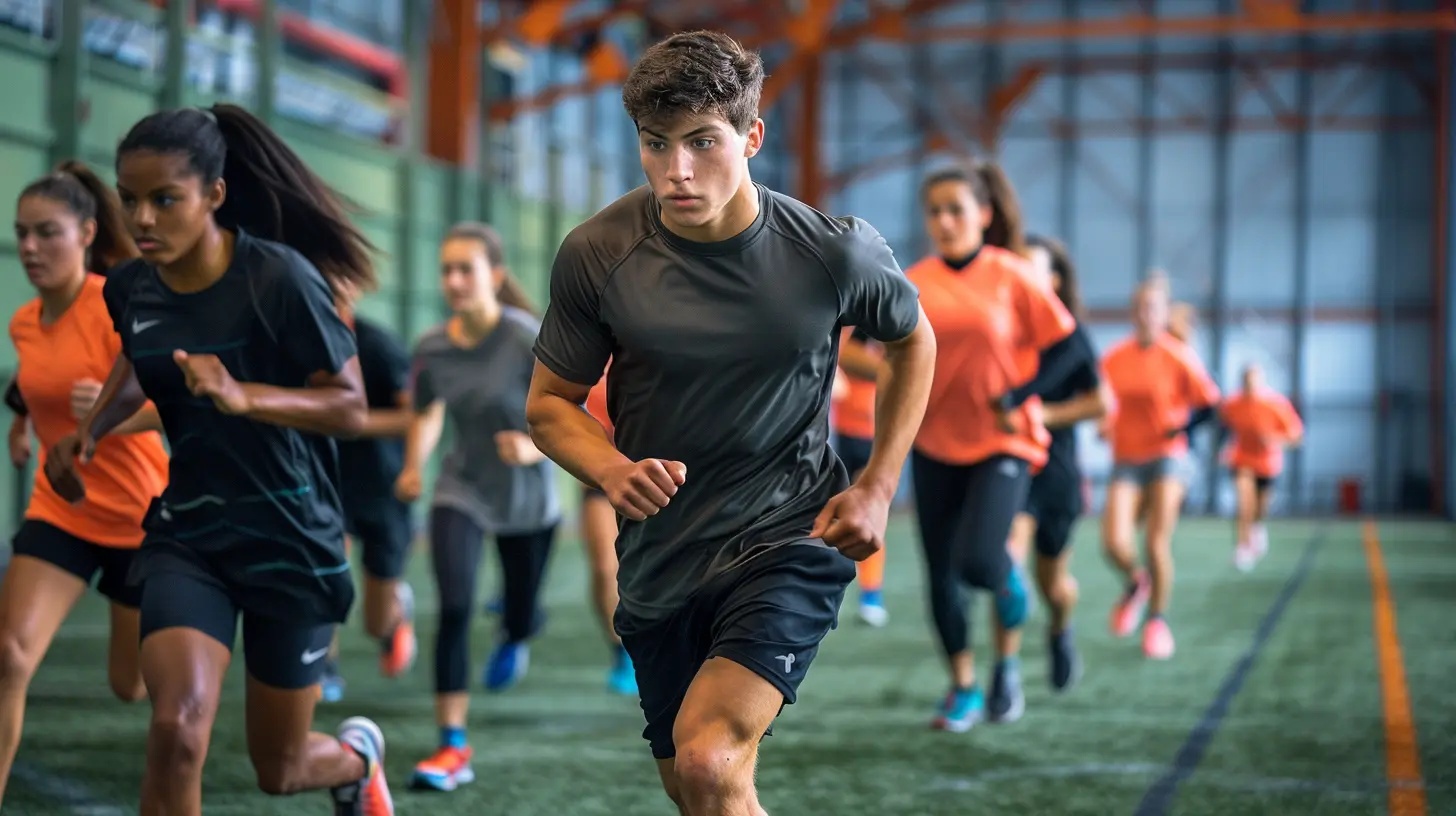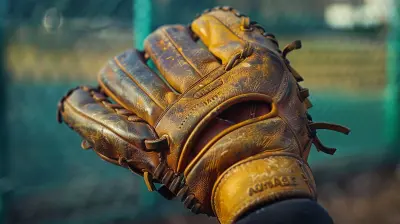The Science Behind Dynamic Warm-Ups for Injury Prevention
5 August 2025
We’ve all seen it before—athletes doing high knees across the field, walking lunges down the hallway, or arm circles that look more like a dance move than a prep for intense activity. But there's a reason for all that movement. It’s called a dynamic warm-up, and it’s got some serious science behind it. In this article, we’ll break down exactly what a dynamic warm-up is, why it's so crucial for injury prevention, and how you can start using it to keep yourself in the game and out of the doctor’s office.

What Even Is a Dynamic Warm-Up?
Let’s clear one thing up: a dynamic warm-up isn’t your old-school "touch your toes and hold it for 30 seconds" kind of stretch. Nope, this is a completely different ball game.A dynamic warm-up involves active movements that get your blood pumping, increase your core temperature, and prepare your joints and muscles for what’s coming next—whether that’s a run, a weightlifting session, or a fierce match under the lights. Think of it as the pre-party before the main event: it gets everything fired up and ready to go.
Static vs. Dynamic: What’s the Big Deal?
Let’s compare: Static stretching is like gently waking up a bear while dynamic warm-ups are more like giving your body a friendly jolt of espresso. Static stretches are passive and tend to relax the muscles. They’re great for increasing flexibility over time, but not so much for getting ready to move fast or strong.On the other hand, dynamic warm-ups mimic the movements you’re about to do in your workout or sport. It’s like rehearsing your lines before a play—you’re not just reading the script, you’re practicing your delivery.
The Real Science: Why Dynamic Warm-Ups Work
Now, let's dig into what’s going on under the hood. Why do these movements help your body perform better and avoid injuries?1. Increased Blood Flow and Muscle Temperature
The most basic benefit is improved circulation. When you move dynamically, your heart rate increases gradually, and blood flows more freely to your muscles. Warmer muscles are more pliable, and pliable muscles are less likely to tear. Simple, right?It’s like warming up a rubber band. Try stretching a cold one and guess what happens—it snaps. But warm it up, and it becomes more elastic. Your muscles work in a similar way.
2. Improved Joint Mobility
Joints are like hinges—they work best when they’re not stiff or rusty. Dynamic warm-ups encourage synovial fluid (yep, that’s a real thing) to circulate. This fluid lubricates your joints, helping you move more freely and smoothly.Think about it: You wouldn’t drive a car with icy, frozen gears, right? So why would you sprint with tight hips or rigid ankles?
3. Neuromuscular Activation
Here’s where it gets fancy. Dynamic warm-ups “wake up” your neuromuscular system—the communication line between your brain, nerves, and muscles. This helps your body respond faster and more efficiently during physical activity.It’s like booting up your computer and loading all the apps you’ll need—you get quicker reactions, better coordination, and enhanced performance.
4. Sport-Specific Movement Patterns
The best part about dynamic warm-ups? You can tailor them to your sport. Whether you’re a sprinter, a soccer player, or a powerlifter, your warm-up can include movements that mimic what you’re about to do.Practicing these motions helps reinforce proper mechanics and technique, reducing your risk of poor form (and injuries) during the actual workout.
The Injury Prevention Angle
We’ve all heard the horror stories: torn ACLs, pulled hamstrings, sprained ankles. While not every injury can be avoided, research shows that dynamic warm-ups drastically reduce the risk of many common sports-related injuries.You’re not just stretching muscles—you’re preparing your entire body to move effectively and safely. Let’s break it down further.
1. Reduced Muscle Strains
Muscles that are cold and stiff are more likely to strain under pressure. Dynamic warm-ups loosen the muscle fibers and improve elasticity. This helps prevent those nasty pulls that take you out of action for weeks.2. Better Balance and Stability
Many injuries come from poor balance or coordination. When you incorporate exercises like leg swings or lateral lunges, you’re engaging stabilizer muscles and improving proprioception (your body’s sense of position).This means you're less likely to roll your ankle on a fast cut or lose form during a lift.
3. Stronger Mental Focus
Warm-ups aren’t just physical—they’re mental prep too. You take a few minutes to get in the zone, sharpen your focus, and mentally rehearse the movements you’re about to do.This mental engagement can keep you alert and help you catch potential mistakes before they lead to injury.
What a Good Dynamic Warm-Up Looks Like
Okay, so now that we know why it’s important, what does an actual dynamic warm-up look like?Here’s a sample full-body dynamic warm-up you can tweak based on your sport or activity:
➤ General Warm-Up (5 Minutes)
- Jumping jacks- Arm circles (forward and backward)
- High knees
- Butt kicks
- Skipping
These exercises get the blood flowing and increase your heart rate.
➤ Mobility and Activation (5-10 Minutes)
- Walking lunges with a twist- Leg swings (forward-backward and side-to-side)
- Inchworms
- Hip openers
- Bodyweight squats
These target your joints and major muscle groups while starting to reinforce good movement patterns.
➤ Sport-Specific Drills (Optional, 5 Minutes)
- Light dribbling/shooting for basketball players- Light sprints and cuts for field sport athletes
- Air squats and shoulder band work for lifters
These dial in the movements you’ll use in your workout or game.
Total time? About 15-20 minutes. That’s it. Just a small investment that pays off big time.
When and Who Should Use Dynamic Warm-Ups?
Here’s the beauty of it: everyone can benefit.- Athletes? Obviously.
- Gym-goers? Definitely.
- Weekend warriors? Absolutely.
- People just trying to stay fit? 100%.
And you should be doing them before any physical activity. Whether it’s a pickup game, a 5K, boxing, or just leg day at the gym—don’t skip it.
Common Mistakes to Avoid
Even though dynamic warm-ups are simple by design, you’d be surprised how many people get them wrong. Here are a few common pitfalls:❌ Going Too Fast
It’s not a race. Focus on quality, controlled movements.❌ Skipping the Warm-Up Altogether
“I’ll warm up during my first set.” Nope. That’s like saying you’ll brake your car after it hits something.❌ Not Making It Sport-Specific
Doing general warm-ups is good, but tailoring them to your activity is what takes injury prevention to the next level.Dynamic Warm-Up FAQs
Q: Can I do static stretches too?
Yes—but do them at the end of your workout to help with recovery and flexibility. Save the dynamic stuff for before you move.Q: How long should my warm-up be?
Aim for 10–20 minutes depending on your workout intensity. More for high-impact sports, less for lighter activities.Q: Can I warm up without equipment?
Absolutely! Most dynamic warm-ups are bodyweight-based and don’t require any gear.Final Thoughts: Warm Up to Stay In the Game
In the end, a dynamic warm-up might seem like a small detail, but it’s one of the most powerful tools you have to prevent injury, improve performance, and feel better while training. It takes a little time, sure—but when you spend a few minutes preparing properly, you’re setting yourself up for success.Remember, it’s not about making warm-ups fancy or complicated. It’s about movement, preparation, and being smart with your body. So, next time you want to skip the warm-up, ask yourself this: Would you jump in your car and hit the highway at full speed without letting the engine run for a minute? Didn’t think so.
Make dynamic warm-ups a habit—your future self (and your knees, hamstrings, and shoulders) will thank you.
all images in this post were generated using AI tools
Category:
Injury PreventionAuthor:

Umberto Flores
Discussion
rate this article
1 comments
Kyle Gray
Dynamic warm-ups are essential for athletes! They not only enhance performance but also significantly reduce injury risk. Embrace this scientific approach to prepare your body and unleash your full potential on the field. Stay safe and play strong!
September 10, 2025 at 2:41 AM

Umberto Flores
Thank you for your insightful comment! I completely agree—dynamic warm-ups play a crucial role in enhancing performance and minimizing injury risk. It's all about preparing the body effectively for optimal athletic performance!


